Costume Analysis: Laapataa Ladies
In Laapataa Ladies, the costumes tie the two women together in their journey of self-discovery.
(Attention: Spoilers Ahead)
Kiran Rao’s Laapataa Ladies is a comedy of errors and mistaken identities, but as the titular lost ladies try to reach their respective home, their journey leads them down a path of finding themselves. This journey, and how they are connected to each other, is beautifully shown in their costumes, designed by Darshan Jalan. When Deepak and Phool, a recently married couple, get on a train to go to his village, they encounter two more recently wedded couples with the brides in similar red ghunghat (veil). When, in a rush to get out of the train, Deepak accidently grabs hold of the wrong ‘wife’, he only realizes the mishap when he reaches his village.
Here, the inciting incident takes place due to a similar ghunghat that hides the entire identity of the woman, something that the film itself points out. It is only when the veils are lifted do we meet the women inside and the distress, or lack thereof, she’s experiencing. The individuality of the woman is now in open, for everyone to see. Phool is panicking. She doesn’t know where she is, where her husband is and can’t remember her husband’s village name. Lost at Pateela train station, she has no option but to spend the night in a public bathroom.
On the other hand, Pushpa - the other bride - doesn’t appear to be as worried. She seems to have a better handle on her emotions even while she too alleges to have forgotten her husband’s village name. Her entire body language, her way of speaking comes across as a red flag. It is only later do we find out that her actual name is Jaya, not Pushpa, which adds to the suss nature of how she ended up at the wrong village with the wrong ‘husband’.
The veils in question, that are so similar that they effectively swap one woman for another, are traditional in their design. Tradition that a woman is supposed to carry on her shoulders through generation to generation. It is this exact societal responsibility that makes sure she keeps her head down and stays quiet, that forces her not to speak up and declare her name to the world, even when she should. Phool and Pushpa remain silent when they realize what has happened. Phool’s silence is out of shock, and Pushpa’s silence is out of necessity as that’s the only weapon that can help her escape a possibly abusive future that is waiting for her.
But it is not just their ghunghats that tie their journey with each other. Throughout the film, both are seen wearing a woolen shawl in deep red color that matches their recently married status. Both are in alien environments, out of their comfort zones, away from familiar faces and dealing with people who are questioning either their intelligence or their motive. The two lost ladies don’t know each other, especially Phool, but their shawl shows the connection they share in this spiritual journey they are on.
While Phool stays at the train station with a band of misfits who take her under their wing, she is only in one saree throughout the time she is living at the station, waiting for her husband. Her main identity, up until that point, was being a wife. It’s obvious that since she has no other clothes, she’d continue wearing what she already has on, but in a symbolic sense, how she wears her saree each passing day reflects her changing mindset. By the end, when she has started working at Manju Maai’s tea stall, she is wearing her bridal saree in a more practical manner and talking about wanting to earn money going forward.
On the other hand, Pushpa has taken Phool’s place at Deepak’s village. She is given some sarees by the female members of his family (since she has none of her clothes with her) and as lovely as she looks wearing them, they don’t seem like ‘her’. Since they are not her clothes, they naturally don’t reflect her personality, but there’s some disconnect between her and the clothes she’s wearing, like she doesn’t belong to her surroundings. None of her sarees mesh with her environment. She is constantly sticking out like a sore thumb. Even when the pattern of the sarees are similar to Deepak’s mother’s or sister-in-law’s saree, standing next to those women, she looks like a woman pretending to blend in and failing miserably.
Throughout the movie, Pushpa carries a question mark with herself. The audience and the characters within the story are not quiet able to understand her motives and her dubious actions are shown in her costumes. As she parades around the village, pretending to be a ‘acche ghar ki ladki’ (a respectable girl), she is secretly doing the ‘unrespectable’ thing of planning her freedom.
Pushpa’s real self is not be found in sarees, but the suits that grant her more freedom for movement. In a flashback, where she’s pleading her case to her mother of not wanting to marry and instead wanting to study organic farming and make a name of herself, she is wearing a suit. The only other time we see her wearing a suit is when she’s about to leave Deepak’s house to catch a bus and run away to Dehradun, but changes her plans at the last moment. Even when she’s buying clothes for herself, she’s getting different types of kurtas, not sarees. Suits and kurtas give her the ability to run, to sprint, to jump around and not worry too much about being ‘modest’, of bringing shame to her family just for being herself.
One of the costume details that stood out to me in the film are the suits both Deepak and Pradeep (Pushpa’s husband) are wearing. Deepak’s suit jacket is oversized. It clearly looks like it has either been passed down from his father/brother or it was intentionally stitched one size larger so that he is able to make use of the suit for the next 10-20 years of his life, pointing to the financial status of his family.
Pradeep, on the other hand, has a perfectly fitted suit. He is in the movie only for a small amount of time, but in that time it is made clear the kind of misogyny and vanity he carries with himself. He appears to be a pampered son in his family, going by the way his parents talk to him, so a fitted suit was bound to be made for him.
Pradeep’s character is further highlighted by the leather jacket he wears to the police stations. Black leather jackets have an interesting history in Hindi cinema. They are either worn by goons or by cops, and sometimes the cop is also a goon, so that works as a double whammy. Basically, in Hindi cinema, the black leather jacket speaks to an immorality of character. In my costume analysis of Guns & Gulaabs, I wrote about how Dulquer Salmaan’s black leather jacket signified an ideal policeman, but considering the trajectory his storyline takes, that jacket could have been nothing but a simple hint of what’s to come.
One character whose personality is perfectly reflected in her clothing is Manju Maai. Her dressing style is unique - she wears a sleeveless shirt over her saree blouse - and points to her no-nonsense, practical nature. Life has hardened her, but her rough exterior hides a soft heart and that shows in the brightly colored sarees she wears, even when they are draped in a careless manner.
One of the sweetest details I found in the movie was the ending where Deepak and Phool are walking back home hand-in-hand after seeing Pushpa off. Phool’s ghunghat falls down from her head and almost like a reflex action, she goes to bring her veil back on top of her head, but then lets it go. That small gesture showed her entire journey as a character, of how she went from a woman so bound by traditions that she wouldn’t even speak her husband’s name to a woman who chooses to overlook traditions if that means being in the moment and simply enjoying yourself.

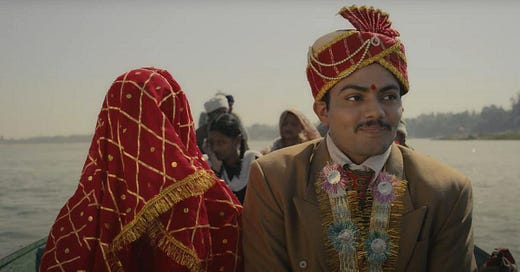


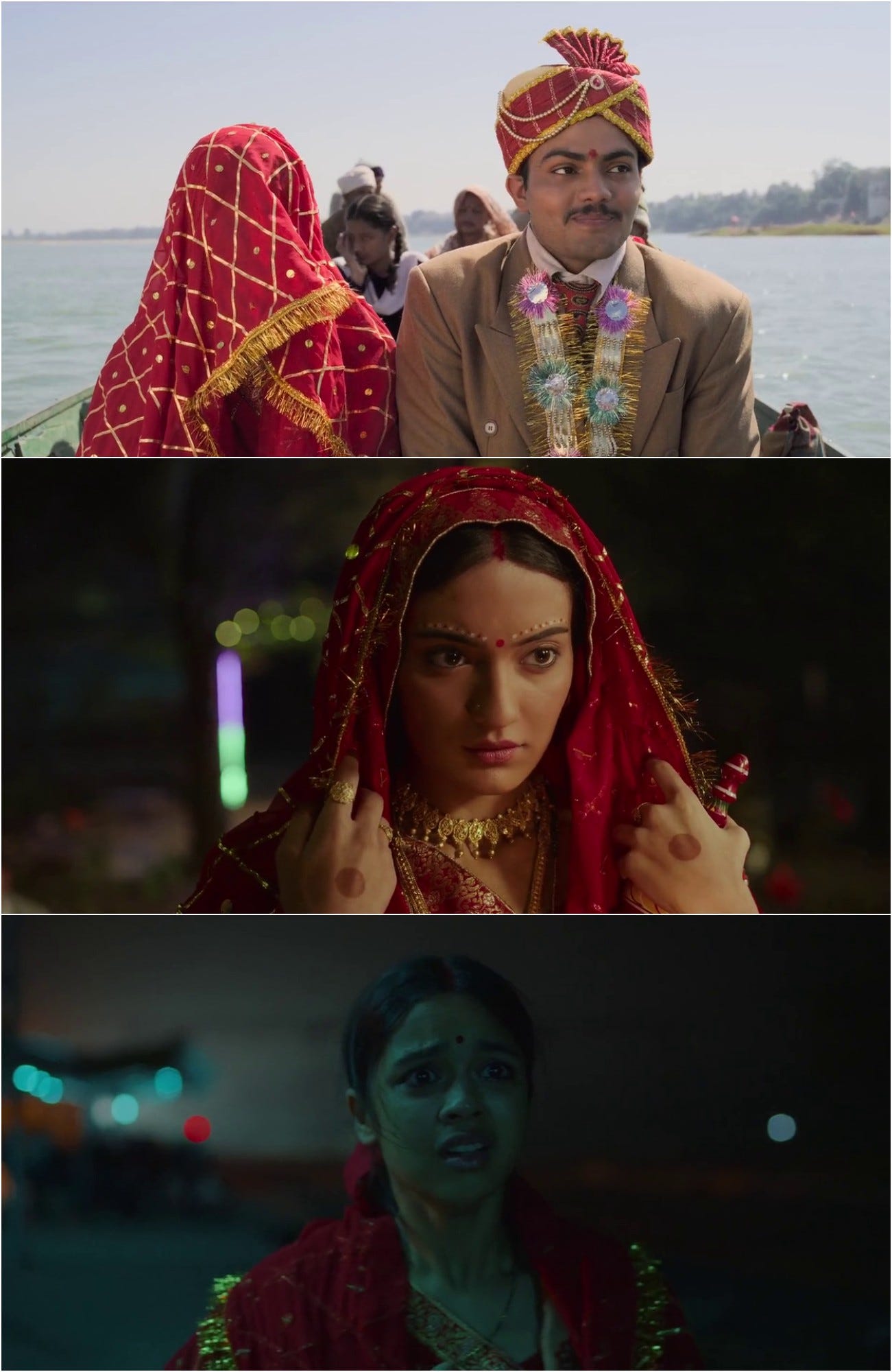
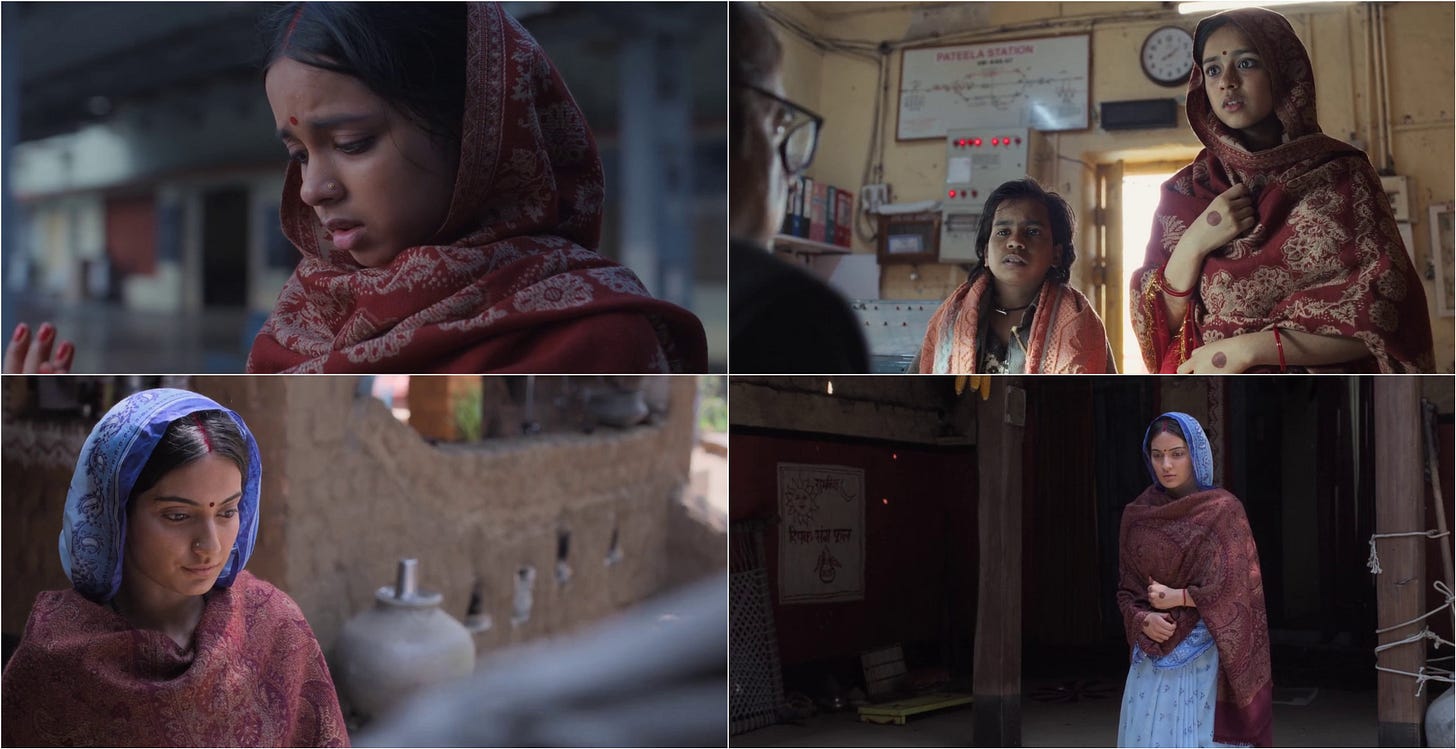

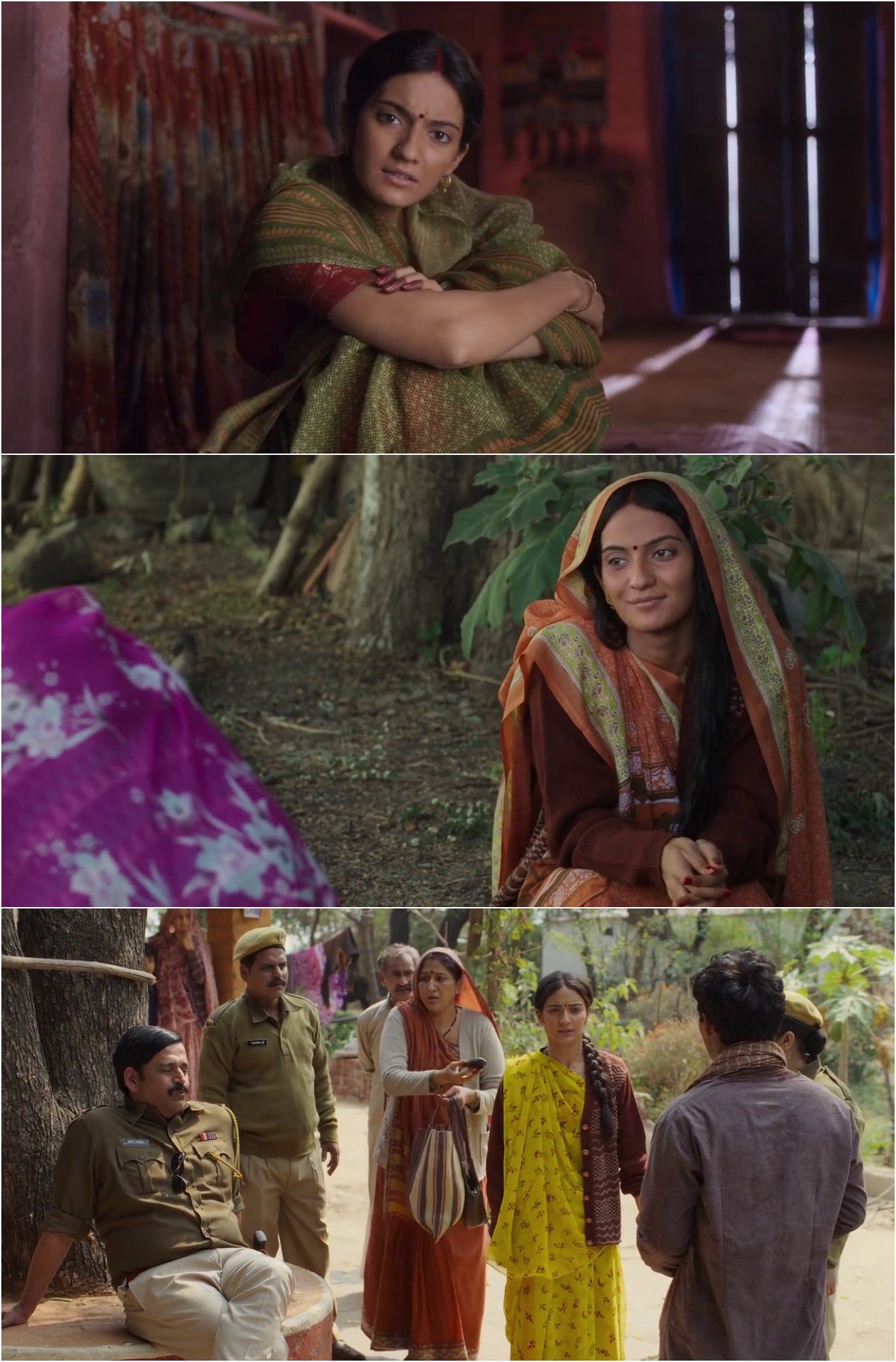
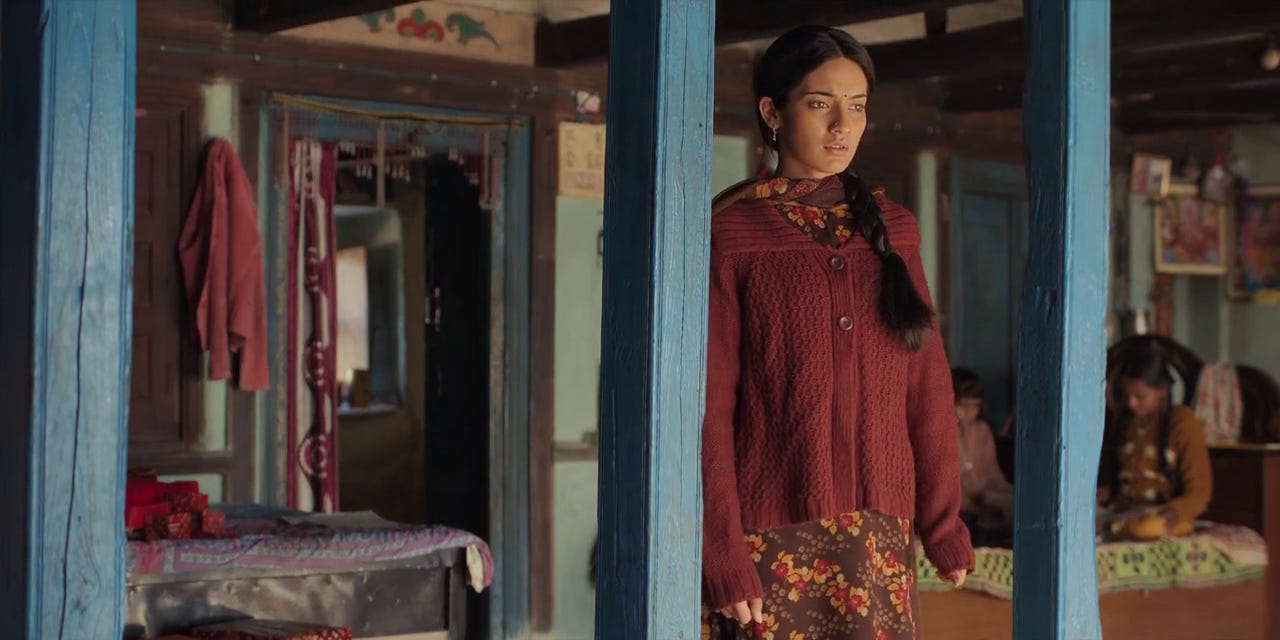
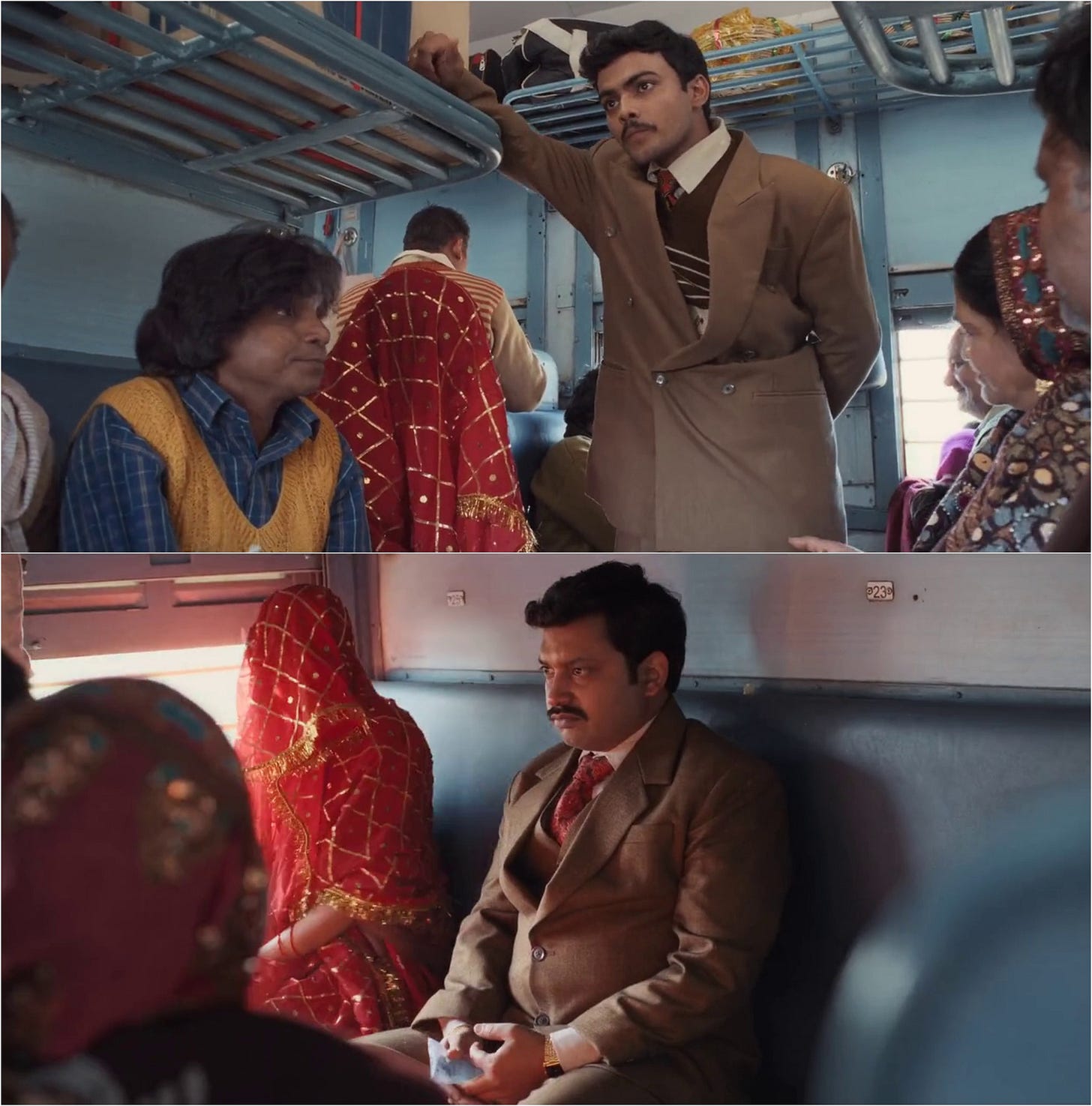
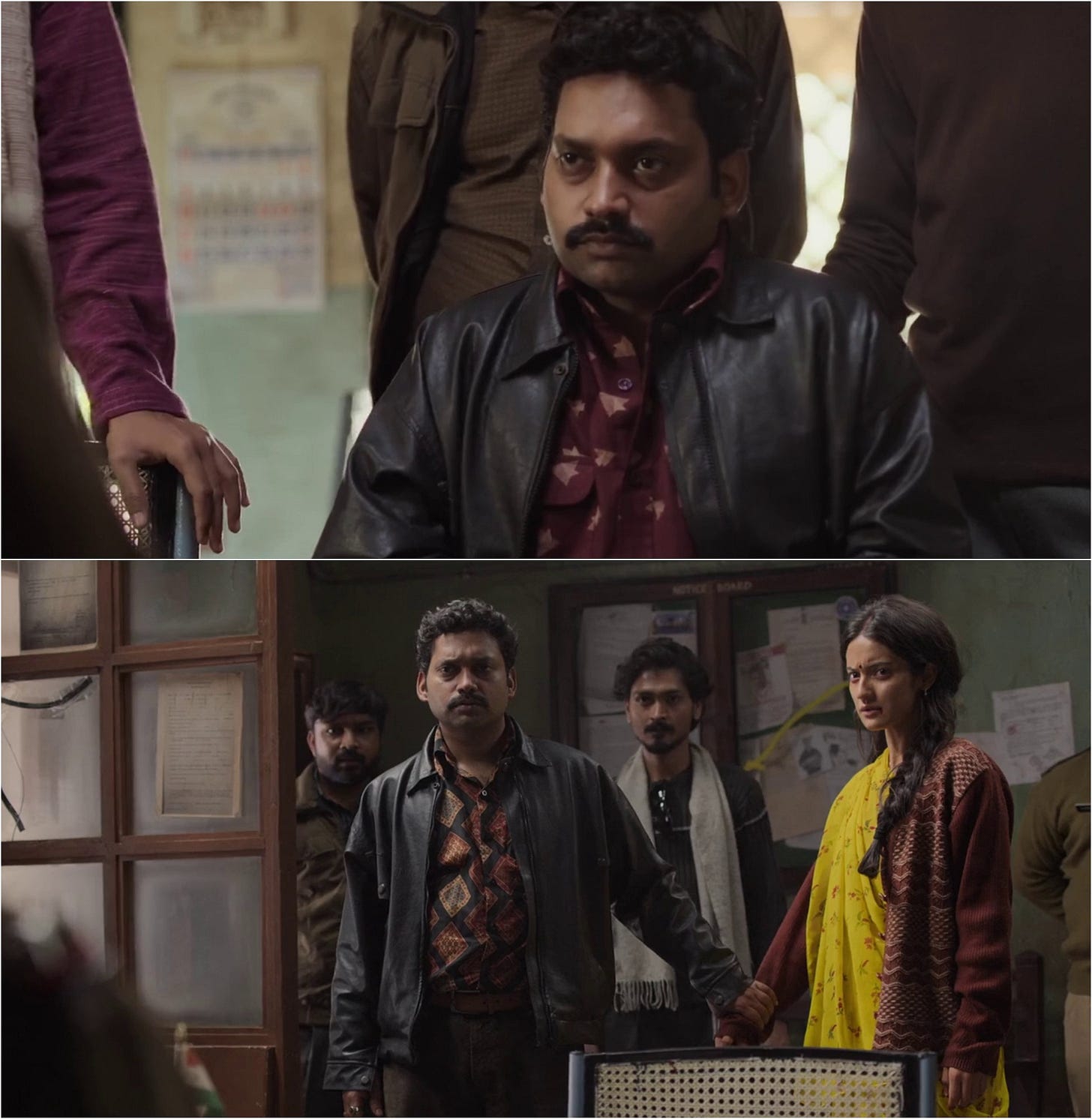
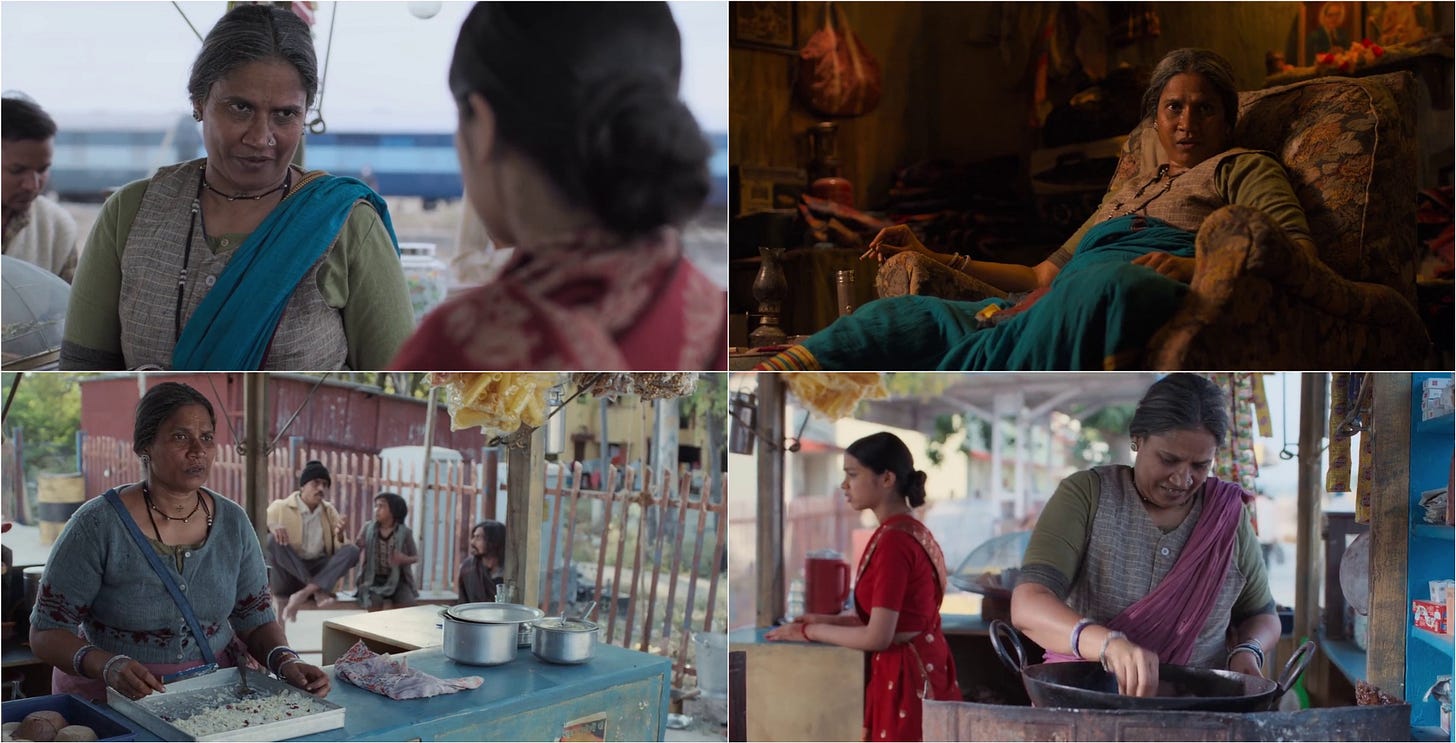
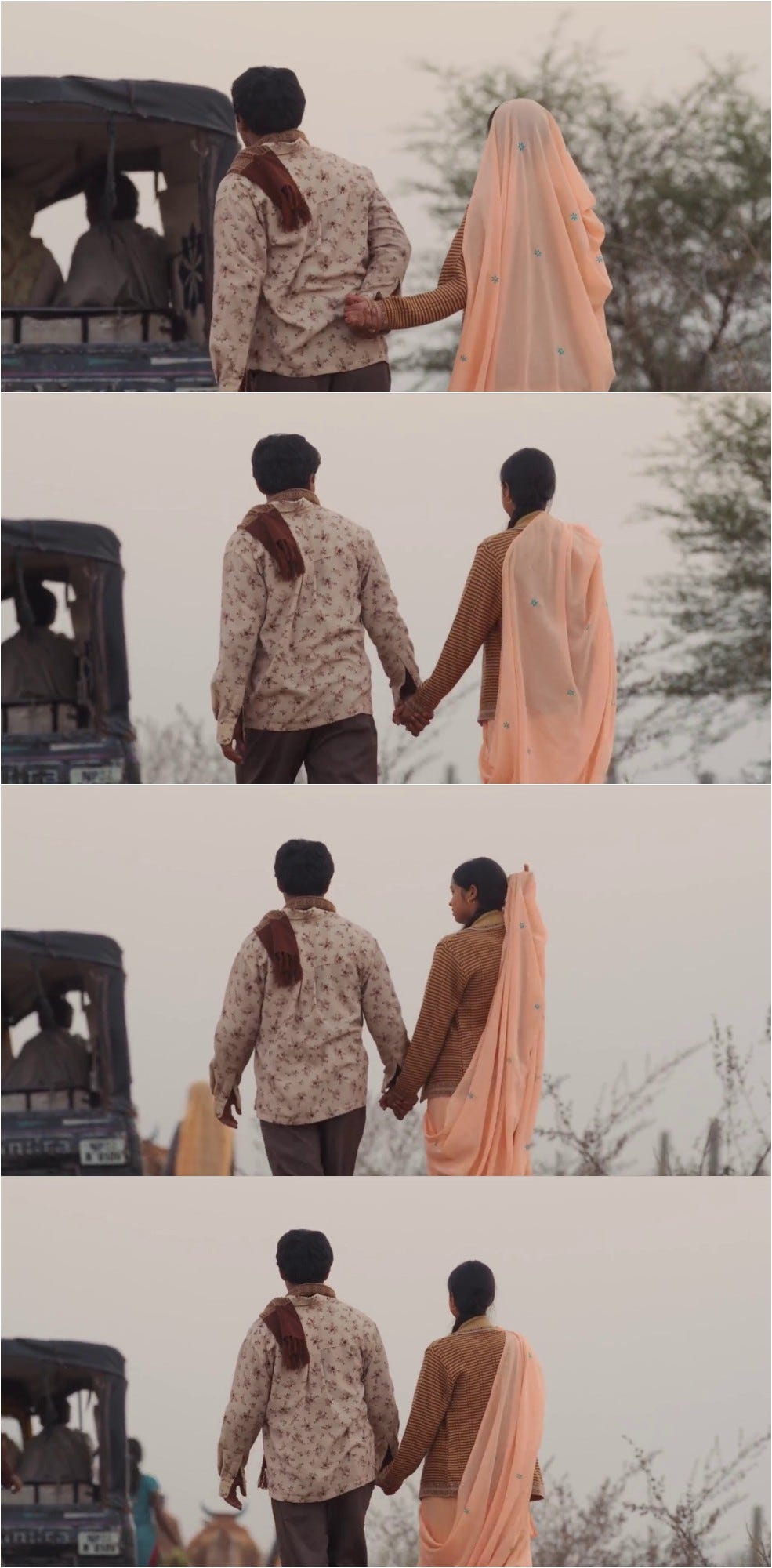
I just want to watch the entire thing now! This was so good 👏
Very appropriate analysis.
I watched the movie today and enjoyed it.